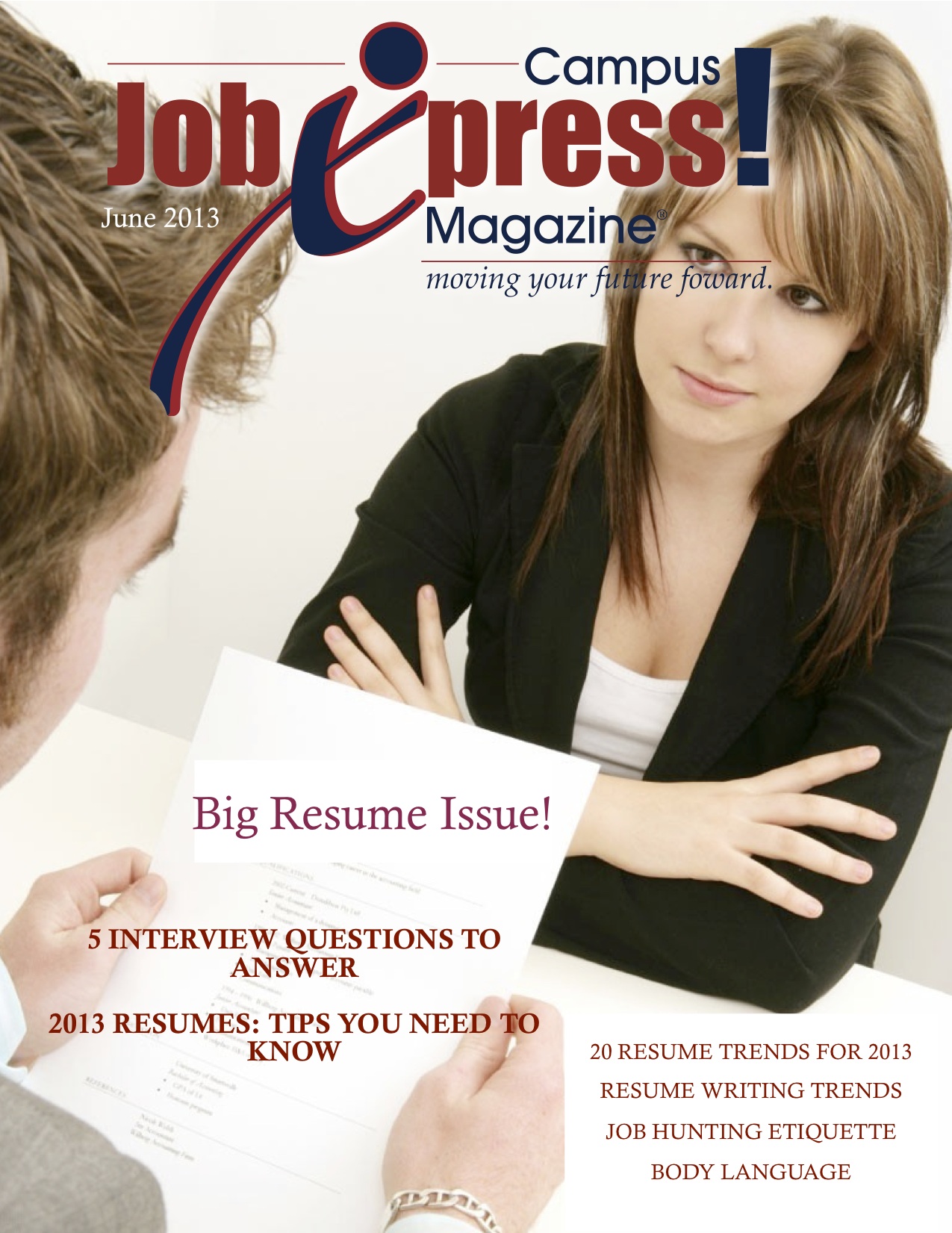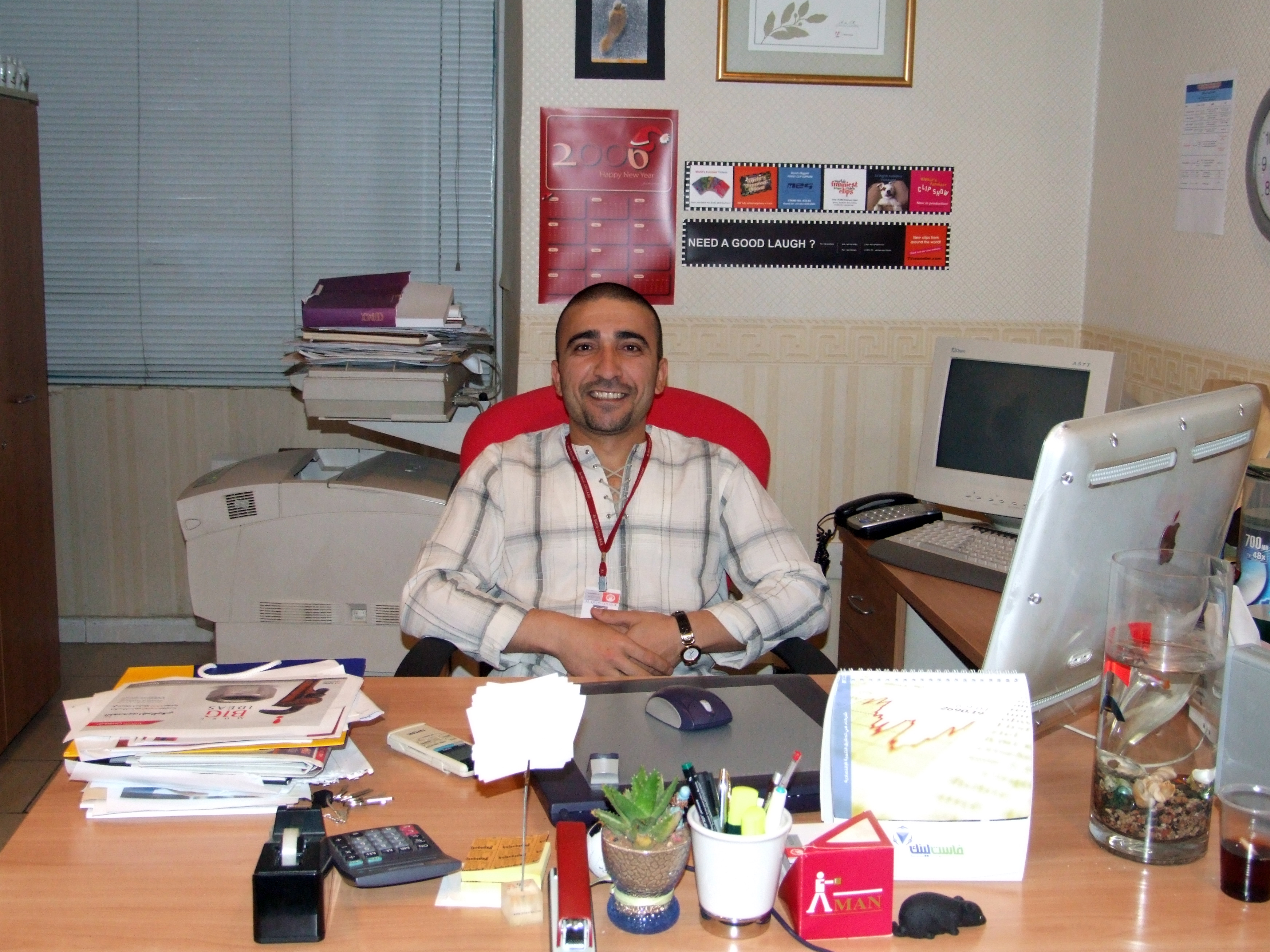
June Magazine 2013



POSTED ON JAN 7, 2013 IN HIRING HUB | 1 COMMENT
Courtesy of Commpro.biz
Happy 2013! At the beginning of this new year, I compiled some of the most frequently asked resume writing and building tips. The goal here is to help you on the road toward developing an awesome 2013 resume.
Applicant Tracking Systems
Online Resume Submission
Your Resume
by: lhgould
Resumes in 2013 should be worded short, concise and to the point. Let’s take a few minutes to review new emerging trends for the resume for this upcoming year 2013. The resume still remains the essential tool for your job search but the ever changing explosion of new technology is re-shaping industry demands. The job seeker still needs the traditional resume/CV as a career overview and introduction to employers, recruiters and network contacts.
Here are 20 high points to consider before you start writing your resume.
Credit: Resume Tips for 2013

A new year has begun and that means new job hunting trends. While the resume has also played an important role, there are also new trends to which we must pay attention. The most important thing to remember in writing your resume is that 2013 is the year of showing, not telling. What are some other resume writing trends for this year?
2013 Resume Writing Trends
If you want to write a resume that will help you stand out, you should pay attention to these tips:
1. Social Resumes
If you are serious about landing a job in 2013, then you’ll have to realize that resumes are no longer static pieces of paper. One of the most important changes in 2013 is the sociability of resumes. Resumes are becoming living entities online. Social Media means that the type of communication between hiring managers and prospective employees has also changed, is more direct and closer.
Prospective employees have the opportunity to interact with, and sometimes befriend, hiring managers before applying for a position. Companies are increasingly likely to use social networks and your social media accounts are now the true first impression.
2. Twitter
The popularity of Twitter is growing astronomically. The good news is that you are probably already on it. Job seekers can harness the power of a tweet by explaining why they are an excellent candidate in 140 characters or less.
Fortunately, you have 160 characters to describe yourself in your Twitter biography. Your Twitter biography section is the online version of your elevator pitch. If you find the task of condensing your qualifications daunting, then you just have to view this as an opportunity.
It is your opportunity to figure out what really makes you different. Brands refer to this as their Unique Selling Proposition (USP). Twitter is your chance to figure out your USP and develop your personal brand. Once you’ve hooked your prospective employee with your amazing biography, then you need to link your website, resume or other professional networking site, i.e. LinkedIn.
3. QR Codes
If you are applying for a technology-related position, then QR codes might help you stand out. A QR code is that small, square, barcode-looking image that you’ve probably seen in publications, advertising, and some product packaging. It shows that are aware of technology trends and that you know how to use them too.
It’s not mandatory, of course, but it can be a good way to add some coolness factor to your resume and make it stand out from the crowd.
Some tips for using QR codes on your resume:
4. Infographics
A picture is worth 1000 words. Infographics are popping up everywhere online and on print. Candidates most likely applying for visual or creative positions can use the popularity of infographics to highlight their qualifications and skills.
Since infographic resumes do not cover in-depth details (they tend to be more simplistic than the standard resume), job seekers can use them to supplement their resume. In some cases, an infographic resume could catch the employer’s attention, but probably they will never replace the traditional text CV.
5. Other Useful Tips
Resumes should always be targeted, specific and quantifiable. Make sure that your resume is not only tailored to the position that you are applying to, but it should also be tailored to the company that you are applying to. Numbers, figures and percentages show what you can do. Quantifying your experience, where possible, also makes you appear more professional.
Hate to break it to you, but the standard “References Available Upon Request” is really outdated. Instead of using that overused phrase, consider showing managers what others have to say about you in 2013. You can pull your strongest third party testimonials and put them at the very top of your resume. The easiest place to find testimonials is from LinkedIn recommendations.
The debate of one- or two-page resumes continues. If you are making a resume that is tailored to that specific job description and company, then hiring managers can overlook the length. Edit your resume, where necessary. Hiring managers are busy and have limited time. An important tip is to make sure that your resume is readable on a computer and another mobile device.
Try reading your resume on a phone or tablet because hiring managers can quite possibly be reviewing your resume on a mobile device. Readability with bullets, bold fonts and short paragraphs matter more than resume length. △
Jose Sanchez has been a resume writer and career advisor since 1999. He writes and shares content related to resume writing, job interview questions, and cover Letters. Managing editor for resumetemplates.org.

When you are out looking for a job, there are some things that go unspoken when you’re on the hunt, which is really too bad because they are things that are really basic, but they make a large impact on how you are perceived by future employers. Don’t worry though. We are going to say them out loud so you’ll keep them in mind when looking for a job.
Hand Shaking
This is very important as you only have one chance to make a first impression. Make sure that you shake with your right hand, and give a firm handshake without squeezing too hard. A firm handshake communicates confidence while squeezing is seen as aggressive. No cupping the hand when you shake, as it can be seen as condescending. Keep it brief, but long enough for you and the interviewer to introduce yourselves.
Standing
When someone enters the room, regardless of the gender, you should stand and greet them. Smile, rise, and greet them with your new-patented handshake and confidently introduce yourself. In the world of work, confidence is key and if you can’t make them believe you’re confident and that you’re right for the job from the get-go, then it’s going to be an uphill climb from there.
Business Cards
Do not pocket the card right away when you are handed one. It appears dismissive. Smile, thank them, and politely take the time to read the card over. Review it for a few moments. Confirm or ask any pertinent questions while memorizing their name. Then put it away.
Cell Phone
Always silence your cell phone prior to any meeting or perhaps, put it on vibrate. During the interview, what you are trying to accomplish is that you give the impression that nothing is more important then what is going on at that moment. Constantly ringing phones not only interrupt your possible employer, it interrupts the whole interview.
Thank You Notes
Always follow up with a thank you note. This is a good idea for those of you with itchy call fingers. Not only does it make you stand out, it also leaves your meeting fresh in the employer’s mind without being pushy. It also keeps you from burning bridges. Even if you decide not to take the job (which can happen), a simple thank you for the opportunity can go a long way.
Calling
One of the things that you should have gotten, or at the very least politely asked about, was a length in time in which they would let you know if you got the job. Do not call everyday afterward. Follow-ups are important, but don’t call until the time frame is up. You want to appear excited about the opportunity, but not annoying to anyone who is still reviewing your resume.
Dress
Always dress appropriately for an interview and bring a smile with you. Even if your interview has been scheduled on a casual Friday, dress appropriately anyway. If you are going to get a job digging ditches, dress appropriately for that appointment. You are selling yourself and you are getting the chance to market yourself to someone who is hopefully going to be paying for your skills. You and your resume deserve to be presented in the best possible way.
Voice Mail
If it’s cute, funny, religious, political, suggestive, has kids chanting, or has music in the background… lose it. It may be great for grandma to hear the kids singing the caroling of the bells for five minutes before she can leave a message, but for an employer, it’s annoying and it’s a waste of time. Try to keep it short, to the point, and professional.
Phone Calls
Be clear, be confident, be polite, and identify yourself. The first two things that should fall from your lips over the phone should be your name and the reason you are calling or the person you are trying to reach.
Putting the Employer On Hold On the Phone
It is not okay to put a possible employer on hold. If you are getting another call while you are conversing with the employer, it can go into your voice mail. If the employer is calling, that means they are interested in speaking to you. Do not stop the gravy train before it has left the station by putting them on hold because Aunt Flo just had to tell you about what Timmy did last weekend. Those individuals who know that you are on a job hunt will understand when you get back to them.
Politeness
When going into a new work environment, make it a point to be polite to everyone! That means everyone. If the janitor says hello, you return the hello. If the secretary smiles and asks how your day is, you tell her it’s marvelous. If she just looks you up and down and sniffs, smile and ask how her day is going. You never know who knows who or who is related to whom, or even how close these people are to the person you’re hoping to work for. Not only will they be helpful in getting any information you may need, they are very likely to report any mishaps in your behavior to your future employer. In other words, just be nice, smile and treat everyone as you would like to be treated. Why? Because it’s just the right thing to do!
Now that you’re all prepared for the interview, go out there and get that job! △

Body Language
Reading people is an art that has been around for ages. Watching the way others move can tell you a lot about what they are thinking and what they are trying to say. If you watch your employer when he/she speaks to staff, you can look for certain things that may help you decide how to tread in the situation you mind find yourself in.
Keep in mind that body language is not an exact science. Some movements are different based on things like age, gender, culture, ethnicity, or location. No simple body language tells the whole story. There are plenty of outside factors that can affect a reading. We are just going to go over a few that are most common across the board to give you something to watch for when you are in an interview.
Though this is a very short list of possible body signals, we have included a link if you would like to learn more. So good luck with your interview. Hopefully you’ll have a fist pumping, eye widening experience! △
More information can be located here: http://www.businessballs.com/body-language.htm